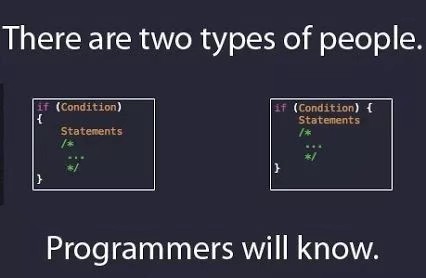Linux内核编码风格在内核源代码的Documentation/CodingStyle目录下(新版本内核在Documentation/process/coding-style.rst)。
- 变量命名采用下划线分割单词,如:
int min_value;
void send_data(void);
```
2. 代码缩进使用“TAB”,并且Tab的宽度为**8个字符**
3. switch和case对其,即case前不缩进,如:
```C
switch (suffix) {
case 'G':
case 'g':
mem <<= 30;
break;
case 'M':
case 'm':
mem <<= 20;
break;
case 'K':
case 'k':
mem <<= 10;
/* fall through */
default:
break;
}
```
4. 不要把多个语句放一行,如:
```C
if (condition) do_this; // 不推荐
if (condition)
do_this; // 推荐
```
5. 一行不要超过80个字符,字符串实在太长,请这样:
```C
void fun(int a, int b, int c)
{
if (condition)
printk(KERN_WARNING "Warning this is a long printk with "
"3 parameters a: %u b: %u "
"c: %u
", a, b, c);
else
next_statement;
}
```
6. 代码使用K&R风格,非函数的花括号不另起一行,函数花括号另起一行,例如
```C
if (a == b) {
a = c;
d = a;
}
int func(int x)
{
; // statements
}
```

7. do...while语句中的while和if...else语句中的else,跟“}”一行,如:
```C
do {
body of do-loop
} while (condition);
if (x == y) {
...
} else if (x > y) {
...
} else {
....
}
```
8. 只有一条语句时不加“{ }”,但如果其他分支有多条语句,请给每个分支加“{}”,如:
```C
if (condition)
action();
if (condition)
do_this();
else
do_that();
if (condition) {
do_this();
do_that();
} else {
otherwise();
}
while (condition) {
if (test)
do_something();
}
```
9. `if, switch, case, for, do, while`后加一个空格
10. 函数长度不要超过48行(除非函数中的switch有很多case);函数局部变量不要超过10个;函数与函数之间要空一行